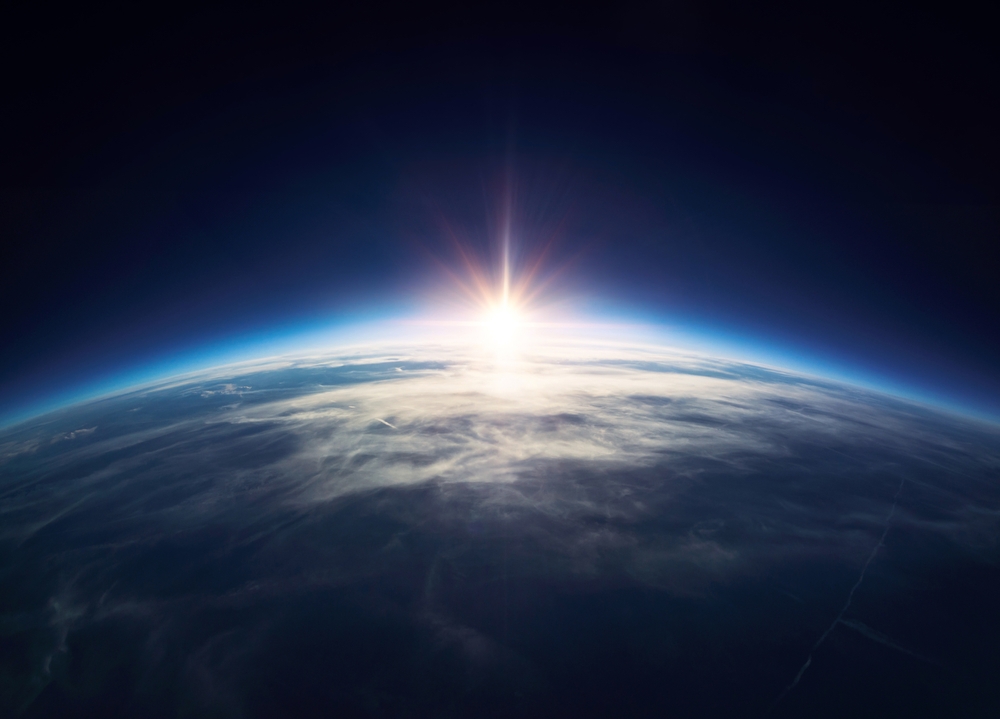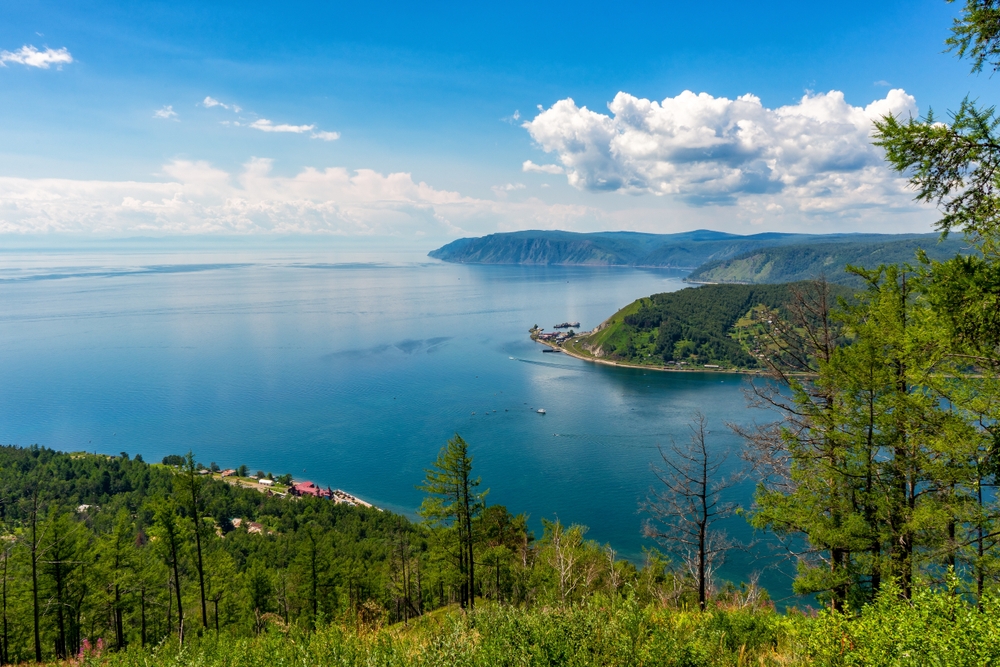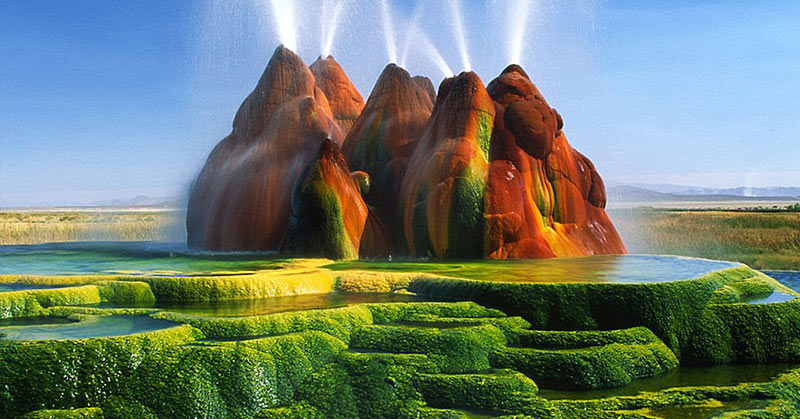Humans can make some pretty amazing things, but nothing we ever do will beat the awe-inspiring natural phenomena created by Mother Nature. Several of these sites are so other-worldly looking that you might not even believe they’re on our planet at all.
21 Unbelievable Natural Places Around the World

They can be found on nearly every continent, so there is no shortage of extraterrestrial nature to behold no matter where you are from.
1) Tianzi Mountains, China
Formed 400 million years ago through the rising and falling patterns in the earth’s crust, this beautiful 67 square kilometer mountain range is made of quartz sandstone. It is located in the Wulingyuan Scenic Area of Zhangjiajie, 55km from Zhangjiajie City. (1) James Cameron even drew inspiration from these mountains for iconic scenes in the 2009 film Avatar.
2) Pamukkale, Turkey.
Though these pools look like they are covered in ice, this is actually not the case at all. They are formed from large pools of water deep under the surface that is heated by volcanic lava. The hot water dissolves and becomes saturated with pure white calcium, which it then carries to the earth’s surface and runs down the hillside. In the cooler outside air, the calcium precipitates out and clings to the soil, forming travertines, or calcium cascades that are “frozen” into stone. (2)
3) Baikal Lake, Siberia (Russia)

This 20 to 25-million-year-old freshwater lake is one of the largest and deepest in the world and holds one-fifth of the world’s freshwater. During the cold winter months, the lake freezes, but the water is so clear that it turns to gorgeous turquoise-coloured rock and you can see up to 130m deep into the lake. To see the emerald ice, visit between January and May. (3)
4) Zhangye Danxia Landform in Gansu, China
After these mountains shot up from tectonic plate collisions, 540 million years ago, rivers formed and deposited red sandstone. Throughout time, different types of sedimentary rock formed containing varying amounts of salt in the mud and stones. This is what gives the slopes their dazzling array of colours. (4)
5) Son Doong Cave, Vietnam
The world’s largest cave, inside which you can fit skyscrapers, is certainly something to behold. It was formed 2 to 5 million years ago where river water eroded away at the limestone beneath the mountains. Where the limestone was weak, the walls collapsed leaving massive skylights. The cave itself is more than 200m wide, 150m high, and about 9km long. (5)
6) Dragonblood Trees, Socotra, Yemen
The island of Socotra, Yemen, is the only place in the world where you can find the prehistoric Dragonblood Forest. Though the odd canopy-like shape of the trees is an interesting sight, the trees get their name from the red resin it secretes known to locals as emzoloh. Unfortunately, climate change is causing a disruption in the monsoon season vital to the survival of these trees, and they are slowly disappearing. (6)
7) Glowing Beach, The Maldives
The stunning sparkling waters of this popular vacation destination are as remarkable as they are tricky to spot. Caused by blooms of bioluminescent plankton in the warm water, they are difficult to predict and don’t often come all the way into shore. Most often they occur far out in the ocean and can only be seen from the beach when there is a current strong enough to wash large numbers of them into shore. (7)
8) Red Beach, Panjin, China
This crimson coloured marsh gets its famous hue thanks to the chenopodium, or red weed, that grows there. This is a government protected area, however there are designated pathways tourists can use to explore this rare and delicate ecosystem. (8)
9) Salar De Uyuni, Bolivia
The world’s largest salt flat, stretching out over more than 10,000 square kilometres, these flats have been providing tourists and photographers with a stunning mirror effect for their photos for years. (9)
10) Monte Roraima, Venezuela
The highlands of this mountain range that borders Venezuela, Brazil, and Guyana, Suriname, and French Guiana are made of ancient sedimentary rock that is over 2 billion years old. This is some of the oldest known sedimentary rock on earth. (10)
Pictures: Ukrainian Photographer Captures a Magical World of Snails in Incredible Macro Shoot
11) Fly Geyser, Nevada, USA
This famous site is part mother nature, part man-made. They were created accidentally in 1964 when a geothermal power company drilled a test well deep into the ground. The well was either improperly capped or left unplugged entirely, allowing burning hot water to shoot out of the holes and deposit calcium carbonate on the surface. Slowly over the last few decades, those deposits have been growing by a few inches each year. The bright green and red mounds of sediment are now over 6-feet tall. The colour comes from thermophilic (heat-liking) algae that thrive in the warm climate. (11)
12) Grand Prismatic Spring, Wyoming, USA
Deeper than a 10-story building, larger than a football field, and covering nearly every color of the rainbow, this is Yellowstone National Park’s most photographed monument. It gets its color from thermophilic (heat-loving) bacteria in the water, and these microbes have actually led to important medical and scientific advancements. (12)
13) Naica Mine, Mexico
Not a tourist attraction but an actual functioning lead-zinc mine in Chihuahua, the mine is famous for its massive gypsum crystals. (13)
14) Antelope Canyon, Arizona, USA
To the native Navajo people of the area, this canyon is known as “the place where water runs through rocks”. The tribe considers it to be a spiritual place and sacred to their culture and way of living. (14)
15) Abraham Lake, Alberta, Canada
Another mother nature-human combo, this artificial lake was created in 1972 during the construction of the Bighorn Dam. It is famous for its frozen bubbles, but there is more than meets the eye here. These bubbles are made of methane gas that forms when organic matter sinks to the bottom of the lake for bacteria to feed on. Those bacteria release the gas and, in the winter, those bubbles rise up and then freeze in stacks just under the surface of the ice. These bubbles, however, can crack and release the gas at any time. This gas is highly flammable, so lighting up a cigarette while observing the bubbles is not advisable, or you might be in for an explosion you weren’t counting on being a part of. (15)
16) The Wave, Arizona, USA
Though a popular site to visit, it is important to note that in order to see the famous Wave, you must first obtain a permit, then you must be prepared to complete the 6-mile trail-less hike using a map and compass. Only 20 permits are giving a day, and they can see up to 150 applications, so plan your trip accordingly. (16)
17) Glowworms Cave, New Zealand
This 30 million-year-old masterpiece is lit up by – you guessed it- glowworms! This special worm is unique to New Zealand, making this the only place in the world where you can see this spectacular sight. (17)
18) The Pinnacles, Western Australia
This forest of earth mounds can be found an hour’s drive north of Perth, Australia’s only major city on the west coast. They were formed 25 to 30 thousand years ago from seashells deposited after the ocean receded to where it is today. Gradually over time, the pinnacles were formed from sea winds that pushed and moved the sand around. (18)
19) Dallol Volcano, Ethiopia
Found in Africa’s Rift Valley, the Dallol Volcano is known as one of the hottest places on earth. It gets its color from the magma that heats the groundwater from the surrounding highlands. The hot water moves to the surface and dissolves potash, salts, and other minerals. This salty brine then comes out in the hot springs and evaporates, leaving salt formations on the floor of the craters. These can be yellow, brown, orange, white, and even green thanks to minerals and algae in the mud. (19)
20) Cave in Algarve, Portugal
As if the beautiful beaches and warm waters weren’t enough, the caves in Algarve are a cool place to visit and break up your time spent sunbathing. The most popular cave is Benagil Cave, found at Benagil Beach. (20)
21) Giant’s Causeway, Northern Ireland
Though the legends of fighting giants that created these hexagonal rocks stacked up on top of each other are a fun tale, in truth, this natural phenomenon is a unique result of a volcanic eruption 60 million years ago. (21) The earth is full of incredible natural formations, many still undiscovered. Once all this social isolation is over, if you have the chance to go see any of them, please do, and don’t forget to take a few pictures along the way!
Keep Reading: 11 natural phenomenons caught on camera that you won’t believe aren’t photoshopped
Sources
- https://www.chinadiscovery.com/hunan/zhangjiajie/tianzi-mountain.html
- https://turkeytravelplanner.com/go/Aegean/Pamukkale/sights/travertines.html
- https://www.jtconcierge.mc/content/see-emerald-ice-baikal-lake-russia
- https://www.chinahighlights.com/zhangye/attraction/danxia-landform-geological-park.htm
- https://www.sondoongcave.org/son-doong-cave-overview.html
- https://globaltrees.org/threatened-trees/trees/socotra-dragon-tree/
- https://www.kuoni.co.uk/maldives/bioluminescent-plankton?Affiliate=aw&awc=3353_1587058866_b9cef3c92f147b383bd8e2bc5da535bc#
- https://www.atlasobscura.com/places/red-beach
- https://www.boliviahop.com/salar-de-uyuni/
- https://www.summitpost.org/monte-roraima/151790
- https://www.visitrenotahoe.com/things-to-do/fly-geyser-one-of-nevadas-little-surprises/
- https://www.yellowstonepark.com/things-to-do/grand-prismatic-midway-geyser-basin
- https://www.jpl.nasa.gov/spaceimages/details.php?id=PIA10615
- https://navajotours.com/tourist-resources/antelope-canyon-history/
- https://www.atlasobscura.com/places/lake-abraham
- https://www.thewave.info/
- https://www.waitomo.com/glowworms-and-caves/waitomo-glowworm-caves
- https://www.australiascoralcoast.com/destination/pinnacles
- https://geology.com/stories/13/dallol/
- https://www.nicolelabarge.com/the-ultimate-guide-to-visiting-benagil-cave-portugal/
- https://www.ireland.com/en-us/what-is-available/natural-landscapes-and-sights/articles/giants-causeway-myth/





















